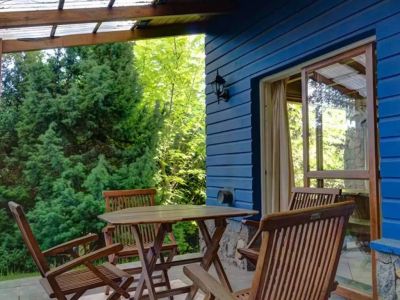In San Martín de los Andes, everything is measured and experienced according to the parameters set by a natural quality that can mutate several times throughout the year and show a thousand different faces. The blooming that takes place in the spring and summer bursts out with its best petals, aromas and colors at the time when both locals and visitors choose to spend longer hours outdoors. As we went around the national park, we felt the typical humid cold temperatures of the woods on our skin. This area also features the drier climate of the steppe. The same situation is given with trees and plants, which develop in different ways. While taking the inner paths on the hillsides, we were surprised by a fantastic view: an extensive area covered by small bushes with some eye-catching red flowers. We heard it was called notro, also known as “fosforito” (“small match” in Spanish) due to the shape of its attractive flower. It hides behind the understory and it so chooses the sunny clearings. The same happens with the gorges and its intense yellow tone covering the sides of the roads and announcing the arrival of warmer weather.
When San Martín Blooms
We decided to spend the afternoon on the beach. We were surrounded by some bushes known as berberis, which include the so-called calafate and michay. Their flowers boast a yellowish hue and its dark blue fruit is edible. According to the popular saying, whoever tastes this fruit will return to San Martín. It is no secret that when the first chochos (lupines) bloom, it is mandatory to travel along the 7-Lake Road. This wild species makes its appearance at many stages, and especially close to Lake Hermoso. It features a wide array of colors that seem to swing in the wind at every bend. Deep blue, pink and lavender prevail. We could also see them in private gardens. Once in the downtown, we noticed the rose bushes in the sidewalks. They have become a highly appreciated feature of the city. As well, other flowers –both native and introduced- showed off their traits as a result of the generous soil. Throughout the years, local denizens have ornamented their gardens, windows, flower beds and corridors with a variety of flowers that have become adapted to this environment. The effort to keep gardens neat and beautiful continues based on the old tradition to choose the best lawns. There is an implied request for all visitors to the city: please do not cut off buds in the street. They live longer in the plant than in a vase. This way, we can enjoy the beauty of this environment we all admire.
Mónica Pons
Eduardo Epifanio

































